This is a drawing of the evolution of the interior of an icy moon.
Click on image for full size
Image from: The New Solar System
How the Interior of Icy Moons Formed
The drawing shows how the inside of an icy moon comes together. As the moons
drew material from the
nebula around them, bits of heavy rock gathered inside the forming moon, as illustrated in figure A.
Once the moon finished forming, these heavy, solid bits of rock fell into the center, as illustrated in figure B. Eventually, the rock at the center solidified into a core, as illustrated in figure C.
The ice on the outside of the core gradually changed from warm, slushy ice, shown in purple in figure B, to completely frozen ice, as shown in figure C.
You might also be interested in:
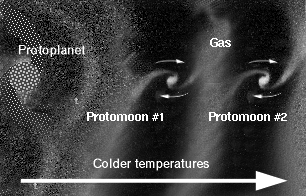
As shown in this picture, while they were forming in the solar nebula, the nucleii of the moons-to-be (called protomoon) drew material to themselves from the cloud of gas and dust around them.
...more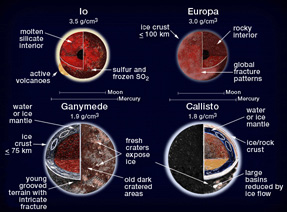
If the satellite has means of warming itself, then the interior may go through many startling changes as the moon evolves. The moon may change its size, and grow or shrink as the layers inside go through
...more
Amalthea was discovered by E Barnard in 1872. Of the 17 moons it is the 3rd closest to Jupiter. Amalthea is about the size of a county or small state. Amalthea is named after the goat in Greek mythology
...more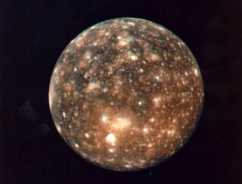
Callisto was first discovered by Galileo in 1610. It is the 2nd largest moon in the solar system, and is larger than the Earth's moon. It is about as big as the distance across the United States. Callisto
...more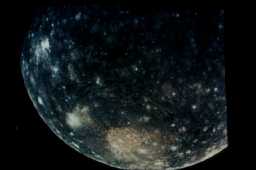
Measurements by the Galileo spacecraft have been shown that Callisto is the same inside from the center to the surface. This means that Callisto does not have a core at the center. This means that, unlike
...more
Many different types of surface are shown in this picture. In the front is a huge crater, which goes for a long way over the surface. This crater could be compared to that of Mimas. They both show that
...more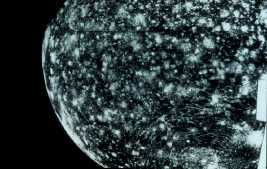
The surface of Callisto is deeply marked with craters. Craters are the little white marks in the picture. It looks like it might be the most heavily cratered body in the whole solar system. And some of
...more














